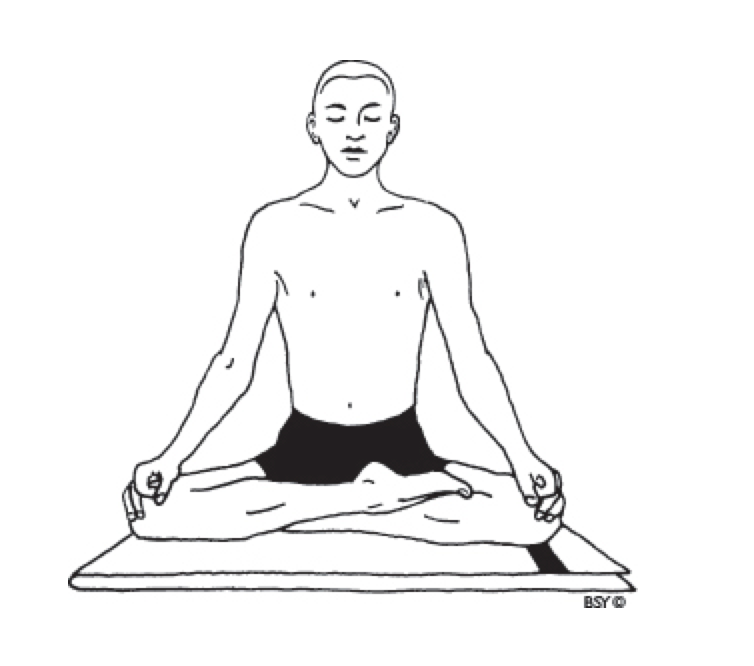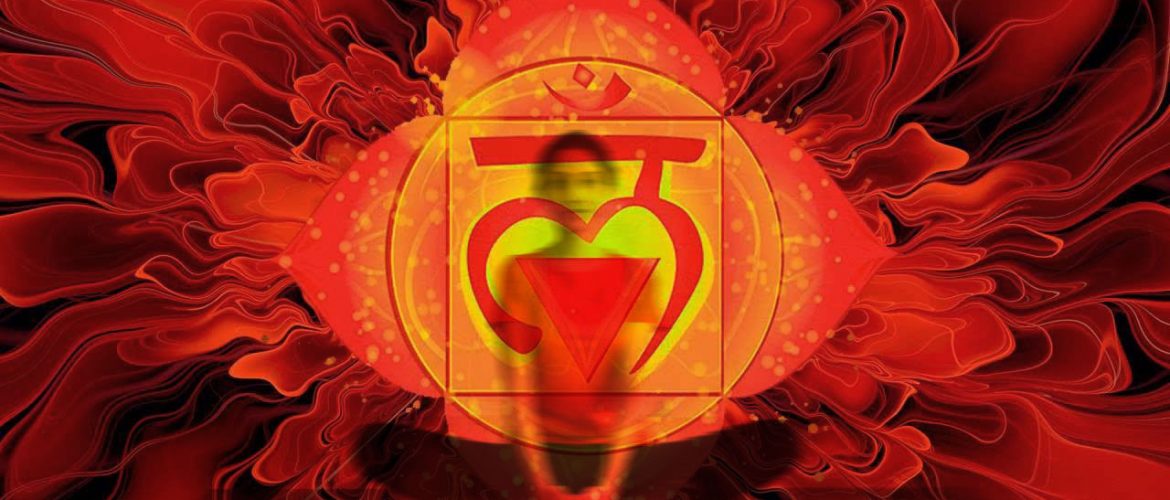By Jason Amiri
Moola bandha: Moola means “root, firmly fixed, source or cause, basis, the foot, lowest part, or bottom, or foundation”, Bandha means lock, restrain, shut or close. Together, the words ‘Moola’ and ‘Bandha’ refer to the contraction of the perineum or its equivalent in the female’s body. This contraction is triggered at the trunk of the body, the perineum. Moola Bandha is known as the perineal lock, contraction of the muscles around the pelvic region in order to release and control energy generated by the mooladhara chakra.
Gheranda Samhita:
“Press with the heel of the left foot the region between the anus and the scrotum, and contract the rectum, carefully press the intestines behind the navel on the spine, and put the right heel on the organ of generation, or pubes. This is called moola bandha, destroyer of decay.”
Moola bandha is performed by relaxing the anus and contracting only the perineal body. It can also be performed by pressing the heel against the perineum.
It is possible that through the practice of moola bandha immense sexual energy will be generated. Then this energy must find a positive means of expression. The sadhaka begins to perform vajroli mudra so that it may be rechannelled upwards into the sushumna. Others find an expression for this energy through working, painting, writing, inventing and so on. Whatever the avenue of expression, this vital energy, or ojas, should not be lost or wasted in idle sensual enjoyment. Ultimately, ojas is the majestic unfoldment of the most highly-refined consciousness. Whether it reaches its final culmination in the sahasrara or remains bound by the wall of mooladhara is a decision that exemplifies a turning point to spiritual life.
Moola bandha is a psychic practice
Moola bandha, and all bandhas in general, are a powerful means of relaxing the body and mind. They relax the mental tenseness that we see mirrored in various personalities as phobia, mania, hysteria, depression and anxiety.
Moola bandha is a psychic practice which manipulates the pranic body, specially apana, by contracting mooladhara chakra. It sends energy up to ajna and sahasrara chakras directly and stimulates all the other chakras as it travels through sushumna. By combining physical contraction with mental awareness and visualisation, we can then heighten our sensitivity on the psychic plane.

Siddhasana, or siddha yoni asana, is the best pose for moola bandha.
We can also touch mooladhara with sound vibration, such as those generated in bhramari pranayama and mooladhara anusandhana. We suggest that you perform one or both of these after your asana practice, and then move directly into mooladhara dhyana. This sequence thus forms a completely integrated sadhana programme leading you through asana, pranayama and concentration to meditation.
Isolation of Mooladhara
1
Pelvic floor awareness:
Sit in any comfortable meditation posture. Contract the whole pelvic floor, Ashwini, mool, and vajroli together, exhale release. This is one round, continue for 25 rounds.
2
Sthul (physical) moola bandha:
Sit in any meditative pose that apply some pressure to the mooladhara trigger point. Natural breathing, contract mooladhara, hold for as long as you can without strain and relax. Continue for 20 rounds.
3
Ashwini mudra (horse gesture):
Sit in any meditative pose. Inhale contract only the anus, the sensation is that of holding to prevent defecation. Hold the breath and contraction, then slowly release as you exhale. Practise twenty five rounds.
4
Vajroli mudra (thunderbolt attitude):
Sit in any meditative pose. Inhale, contract only the urinary muscle. Feel or imagine that you are trying to restrain urination. Hold the breath and contraction, then slowly release as you exhale. Practise twenty five rounds.
5
Ashwini-moola-vajroli alteration:
Sit in any meditative pose that apply some pressure to the mooladhara trigger point.
Perform five rounds of Ashwini mudra with breath, then five rounds of Sthul (physical) moola bandha with the breath, then five rounds of vajroli mudra with the breath. This is one rotation – Ashwini, moola, vajroli. Practise three complete rotations.
6
Sit in any meditative pose that apply some pressure to the mooladhara trigger point. Inhale, bring the breath (prana) from mooladhara to ajna, chin to chest, jalandhara bandha, hold the breath, contract mooladhara, raise the head, exhale, release mooladhara, bring awareness back to mooladhara.
By consistent practice of Moola Bandha, the dormant kundalini awakens and enters into the sushumna nadi and travels upwards passing all the chakras in the body, purifying them and vitalising the body. Jalandhara Bandha, Uddiyana Bandha and Moola Bandha, can be practised at the same time to increase the effect of the Bandha. Moola Bandha can also be practised gently while performing asanas or even during daily activities.
Considering all the benefits of Moola Bandha, I have started to practise Moola Bandha and include it in my daily yoga practices.
I performed Moola Bandha while holding yoga poses such as forward bending, twisting, backward bending, headstand, shoulderstand, handstand, moon pose and other poses. After a few months I achieved controlling the pelvic floor muscles and isolating the muscles related to Vajroli Mudra, Ashwini Mudra and Moola Bandha. On top of that after practising Moola Bandha for a few months, I felt my vitality increased and I was able to control my emotions more. To master the muscles of pelvic floor, I recommend to perform Vajroli Moudra, Ashwini Mudra and Moola Bandha in Moon Pose 3 times a day.
Reference:
“Moola Bandha, The Master Key”, Swami Buddhananda

